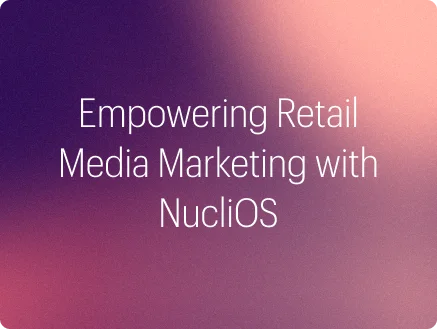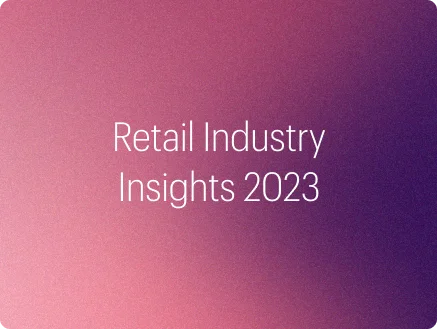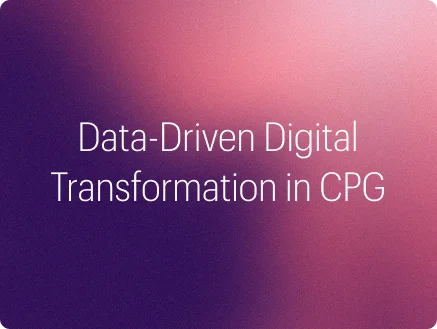The digital advertising landscape is slowly transitioning towards a consumer-centric model due to the proliferation of e-commerce channels. And with data privacy regulations taking center stage, it is becoming apparent that advertisers should look beyond traditional advertising approaches. Enter retail media marketing (RMM) — a unique form of advertising that involves promoting products at or near the point of purchase with highly relevant and personalized ads. In our latest Q&A session, we have Prabal Majumdar, Partner, MathCo, discussing the nuances of RMM and explaining why it is going to gain significant momentum in the coming years.
What sets RMM apart from traditional marketing approaches?
Prabal: Retail media marketing is all about delivering a positive digital experience for everyone involved in the process. One of the key features of RMM is the addressable media ecosystem that ensures a seamless flow of promotional messages. These messages are highly relevant and can connect with individual consumers across different digital advertising platforms such as social media, OTT content providers, etc.
In addition to this high level of relevance and flexibility, RMM can also deliver maximum transparency through its closed-loop reporting feature. A Retail media network (RMN) can provide granular information about an advertisement and whether it triggered a purchase. By relying on deterministic first-party insights, RMNs can take out second-guessing, thereby enabling audience creation and activation based on the actual purchase behavior of customers.
How has retail media marketing (RMM) evolved over time?
Prabal: I would say that identity graphs have been the turning point in the evolution of RMM. Legacy in-store media operators will tell you that retail media marketing is not something new. Funded by co-ops and trade marketing dollars, it took the form of in-store advertising programs in the earlier days. But from a reporting standpoint, it did not have anything to showcase other than a general measurement of sales lift over the baseline, while details about individual customers were missing.
However, with online RMM and the introduction of identity graphs, it has become easy to create audience profiles using complex customer or household identities and customer transactions. For instance, omnichannel retailers such as Walmart, Target, and Kroger are combining customer purchase histories (in-store and online) to create advanced customer profiles that they can use to accurately calculate the effectiveness of advertising campaigns and other performance-related parameters.
What is RMM’s value proposition to all stakeholders in the ecosystem: retailers and advertisers (brands)?
Prabal: Retail media for retailers has become a new value proposition as they can claim their fair share of advertising dollars. In most cases, margins in retail media are ten times their core business. With this additional revenue stream, retailers can keep prices low in their stores and absorb some of the inflationary price pressures (albeit a little in the current day and age). It leads to higher traffic and consideration both in-store and online for the retailers, given the type of retailer they are.
On the other hand, retail media for advertisers is a tool. It brings them one step closer to deterministic media impact measurement. Advertisers can now accurately evaluate parameters like what is the ad impression, who searched for their product, what is the sponsored search impression, and who bought the product. They can easily collaborate with retailers to understand the incrementality of their retail media ad spend. It gives them more transparency and confidence in the retailer’s media network efficacy as they can clearly understand how many customers were influenced by advertising campaigns to buy their product.
What level of analytical capability or expertise should retailers possess to manage a retail media network?
Prabal: It is true that retailers must possess some level of analytical capability to manage retail media networks efficiently. At the bare minimum, they should be able to treat their data as an asset and mine patterns or trends from it quickly. They should also maintain uniformity in product definition and hierarchy and be able to arrive at a single source of truth. If we are looking for more complex foundational capabilities, I would say that retailers must be familiar with website instrumentation and identity graph evolution, which are vital to managing retail media networks.
Should CPG brands pivot to RMM over traditional marketing channels?
Prabal: Absolutely. We must realize that the RMM trend will only continue to get bigger and bigger over time. And due to the nature of attributable media, the next wave of change will come when CPG brands start channeling a major chunk of their trade dollars to retail media for core business outcomes.
With more data protection regulations on the way in 2023, we seem to be slowly entering a “cookie-less” era. How will this impact the RMM landscape?
Prabal: The cookie-less world will make the walled gardens of retail media all the more powerful and valuable. Advertisers will have to give up on their chase for customer data across different platforms and instead start focusing on a handful of core retail media platforms through which the customer shops and interacts. The cookie-less movement will also give more traction to the Clean Room technology as it provides advertisers a lifeline by providing non-personally identifiable information (non-PII) that they can use for their analysis. However, the reliance on third-party data brokers will go down significantly in the near future.
Are you looking for an analytics partner with experience and expertise in retail media marketing? Find out more about our RMM capabilities and how we can help you here.


